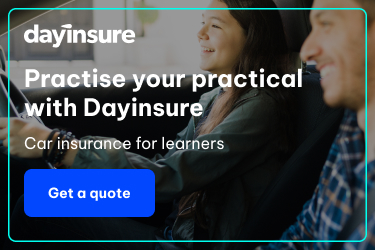The big day has arrived! You’ve done your research, you’ve found the instructor, you’ve planned your outfit (well, hopefully your footwear) but you’re ready to get behind the wheel for what is probably the first time. Your first driving lesson with an instructor is an exciting milestone – but it can be pretty nerve-racking too.
It helps if you know what you first driving lesson will involve beforehand, so make sure you prepare. You’ll pick things up much easier if they’re familiar to you and you feel confident about what happens next.
Here’s 7 steps from ingenie car insurance on how to make sure your first driving lesson goes smoothly.
Good luck!
- Before your first driving lesson
Your driving lesson prep:
- Get some sleep
- Do NOT drink the night before
- Eat some breakfast!
- Double-check where and when you’re being picked up
What to bring to your driving lesson:
- Comfy, non-slip shoes
- Glasses if you think you’ll need them for driving
- Your cash for the lesson (unless you’ve paid upfront)
- A bottle of water
- Remember your provisional licence
- Getting picked up for your first driving lesson
Make sure you’re ready and not faffing at the last minute. If you’re late, it’s your time and your money being spent after all. Some driving instructors will ring the doorbell, some will wait in the car for you – so keep an eye out.
Don’t worry – you’re not going to have to get in the driving seat straight away. You’ll be getting in the passenger seat to start with, while your instructor takes you to a quiet place for you to get to grips with the basics.
- The cockpit drill
When you’ve arrived at a quiet road with low traffic, your instructor will have you switch so you’re in the driving seat. That’s a great feeling!
Your instructor will explain the cockpit drill to introduce you to the checks you’ll need to do every time you drive, so listen carefully. Before long you’ll be doing these checks instinctively.
The cockpit drill:
- Doors securely closed?
- Seat in a comfortable position?
- Steering position established?
- Seatbelts on?
- Mirrors adjusted?
- The controls
Next, you’ll get a run-through of the clutch, accelerator and brake, how to use the handbrake and indicator, and how to change gear. You won’t be expected to be an expert in gear-changing straight away either, so don’t be too hard on yourself if that takes a little while to figure out.
If you need to go through the controls again before you set off – ask! You’ll want to be sure you’ve got a good grasp before you’re driving along at 20 mph and it feels like 120. Your instructor will talk you through everything as you go and will be ready to step in if you do get into a muddle.
2 hours is best for your first lesson, so you have a chance to learn your controls and get some driving in too. By the time you’re standing back at your front door you’ll be wondering where the time disappeared to.
- Heading out onto the road in your first driving lesson
So, time to drive. Before you start the engine, your instructor will explain a few key procedures:
Here’s what you’ll likely learn about in your first lesson:
- Moving off: getting ready to use your gears
- Clutch control including finding the biting point
- Checking your mirrors and blind spot
- Signalling with your indicator
- Changing gear
- Stopping the car, covering the brake and the clutch
- Curb-side parking
It will feel like a lot to take in, but once you get going, try to relax and always remember that your instructor has their own set of controls so you can focus on learning without being scared. If you get the chance, do move out onto the road so you can experience ‘proper’ driving. You won’t regret it!
- After your first driving lesson
Your instructor will drop you home once your lesson has finished. Don’t forget to have a chat about how you found the lesson (don’t just open the door and run!) and tell your instructor anything you think you need more time on next time.
Some driving instructors offer discounts for block bookings, so see if you can book the same slot for several weeks at a time. Ideally, you should have 2 or 3 lessons a week to minimise time between lessons but equally, don’t rush. Everyone learns at their own pace and it’s important to be fully prepared when you take your test. If you’re wondering how long it’ll take you to get to driving test time, read ingenie’s advice about how many driving lessons you’ll need.
If you’re still feeling super nervous, think of the silliest person you know who can drive a car. If they can do it, you’ll have no trouble. Keep asking questions too. Your instructor will be expecting you to have lots to ask and you can guarantee they would have heard it all – so ask away.
- Practise outside of your driving lessons
So that’s the first lesson with an instructor out of the way – but it’s important to keep the momentum going.
If you know someone who can give you a bit of extra private practice, check out ingenie’s flexible Learner driver insurance to drive someone else’s car. You just choose how long you need, from 1 to 6 months, and if you get to the end of your insurance and you need more time, you can buy another chunk.
The good bit: it’s your insurance policy, so if you do have a ding along the way, it protects any No Claims Discount the car owner has built up. Family drama avoided…right
This article was written by our specially selected partner ingenie

